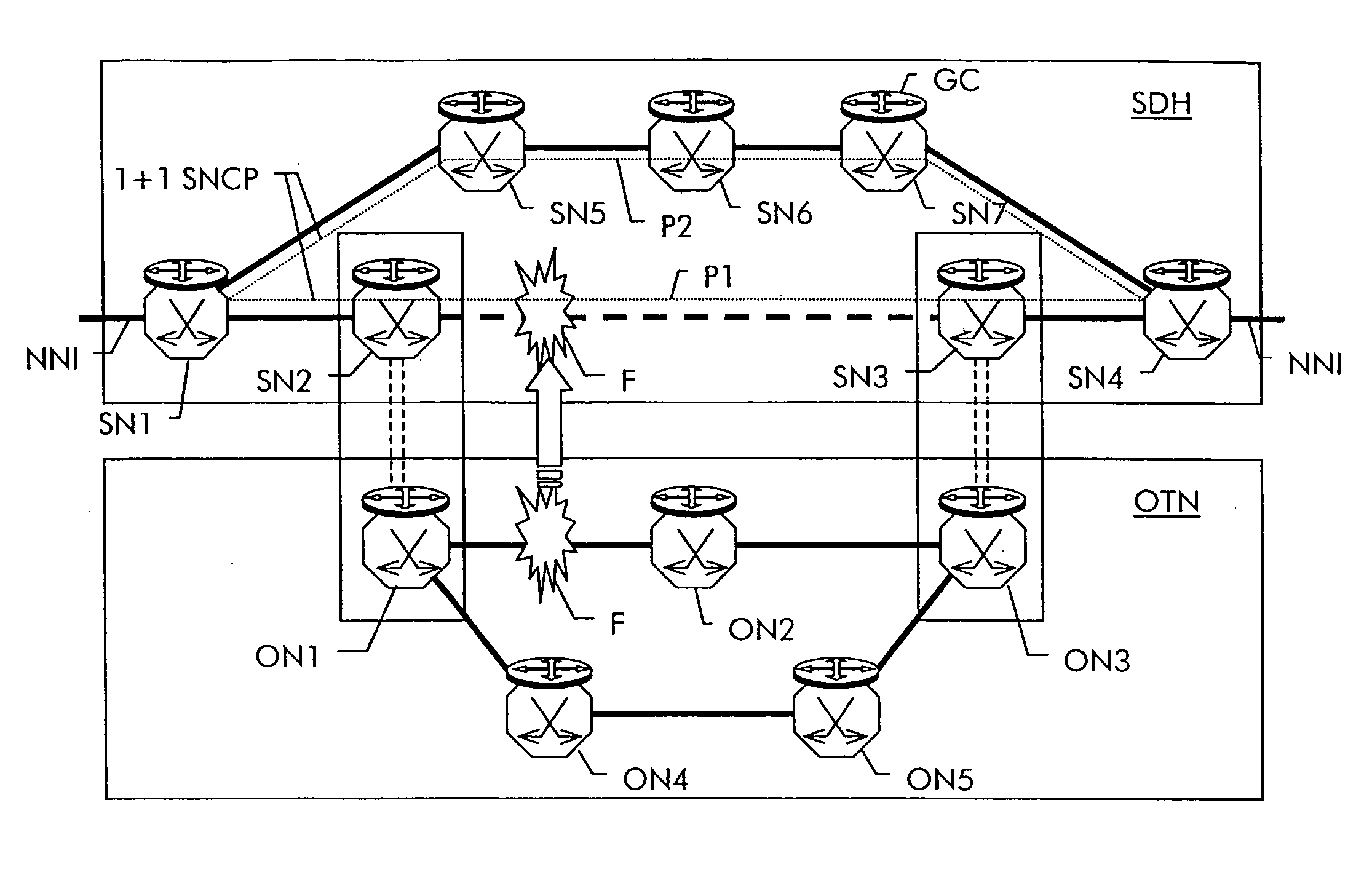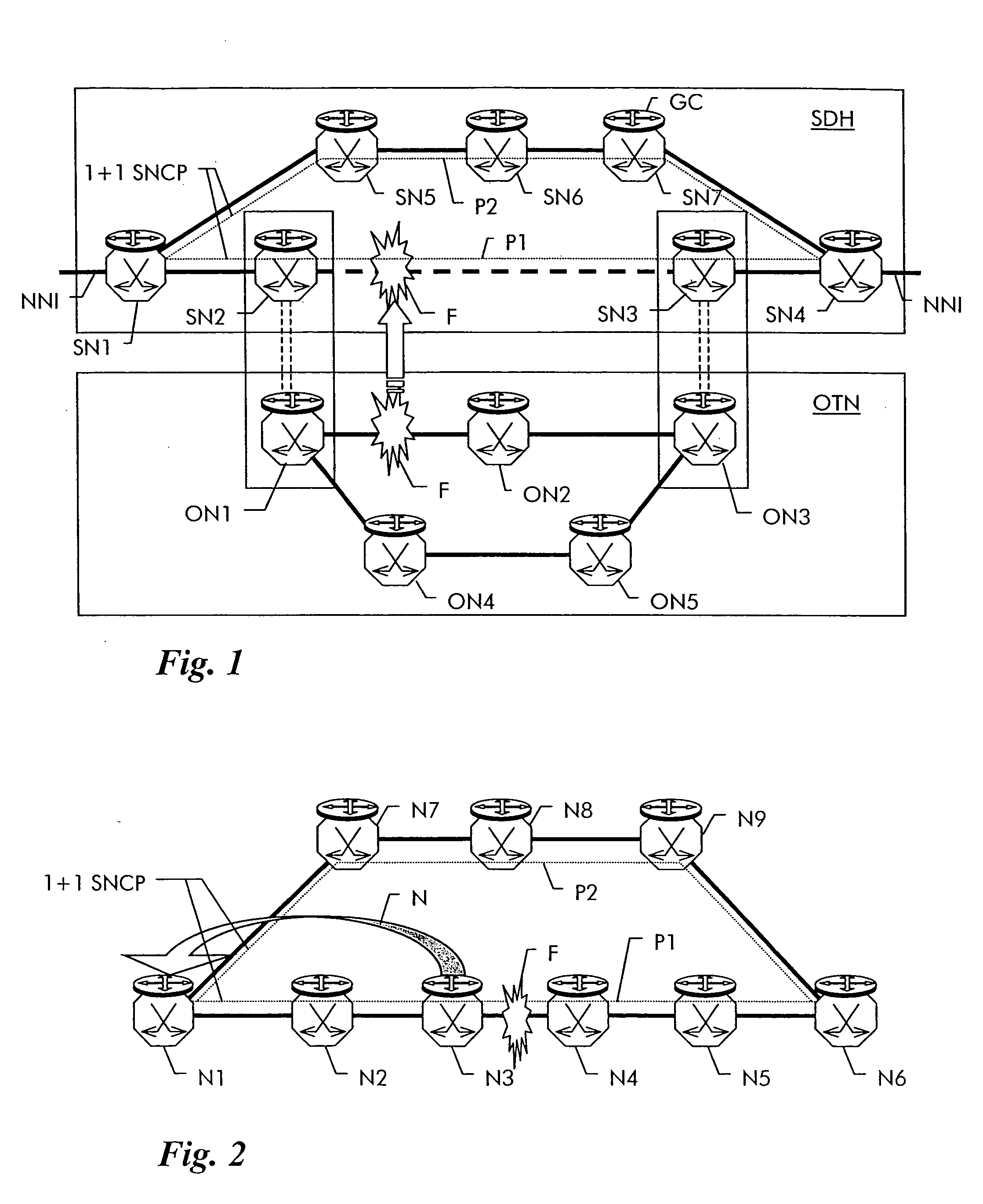Network restoration
a network restoration and network technology, applied in the field of telecommunications, can solve the problems of deleting the failed path and ending the temporary protection, and achieve the effect of no performance differen
- Summary
- Abstract
- Description
- Claims
- Application Information
AI Technical Summary
Benefits of technology
Problems solved by technology
Method used
Image
Examples
Embodiment Construction
[0022]FIG. 1 shows by way of a non-limiting example a layered transport network which contains a first lower layer network OTN composed of network elements ON1 to ON5 and a second higher layer network SDH composed of network elements SN1 to SN7. The lower layer network is an optical transport network OTN as defined in ITU-T G.709. ON1 is physically connected to ON2 and to ON4, ON2 is connected to ON3 and ON5 is connected to ON4 and to ON3. The interconnections are optical fibers and carry wavelength multiplexed signals, where each wavelength represents a multiplex unit in the OTN.
[0023] The higher layer network is an SDH network as defined in ITU-T G.707. SN1 is connected to SN2 and to SN5, SN6 is connected to SN5 and SN7 and SN4 is conencted to SN3 and SN7. Between SN2 and SN3 exists a connection which uses a wavelength channel through the underlying OTN from ON1 over ON2 to ON3. In the OTN, a path exists thus for the SDH client layer between ON1 and ON3 across ON2.
[0024] Both ne...
PUM
 Login to View More
Login to View More Abstract
Description
Claims
Application Information
 Login to View More
Login to View More - R&D
- Intellectual Property
- Life Sciences
- Materials
- Tech Scout
- Unparalleled Data Quality
- Higher Quality Content
- 60% Fewer Hallucinations
Browse by: Latest US Patents, China's latest patents, Technical Efficacy Thesaurus, Application Domain, Technology Topic, Popular Technical Reports.
© 2025 PatSnap. All rights reserved.Legal|Privacy policy|Modern Slavery Act Transparency Statement|Sitemap|About US| Contact US: help@patsnap.com


